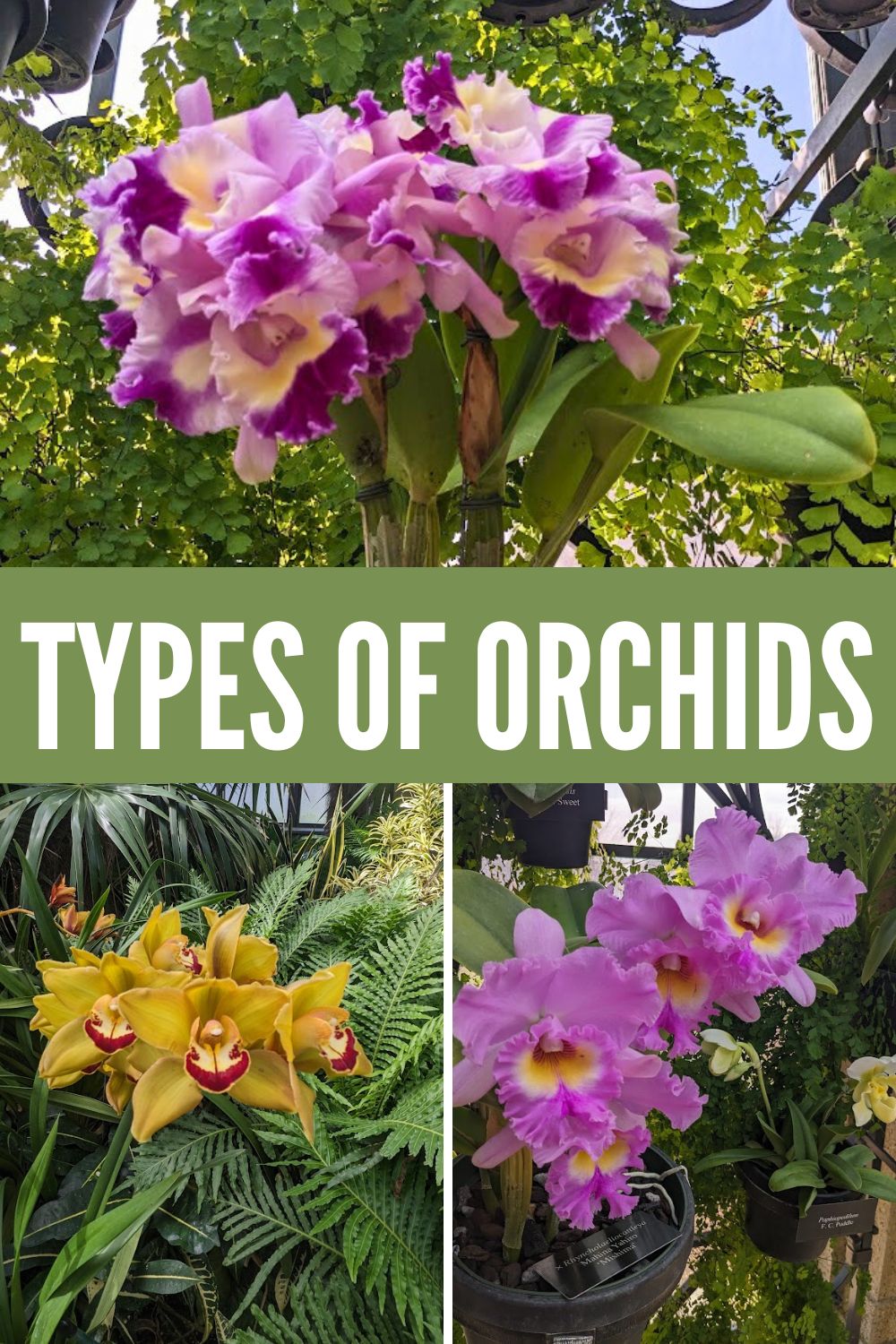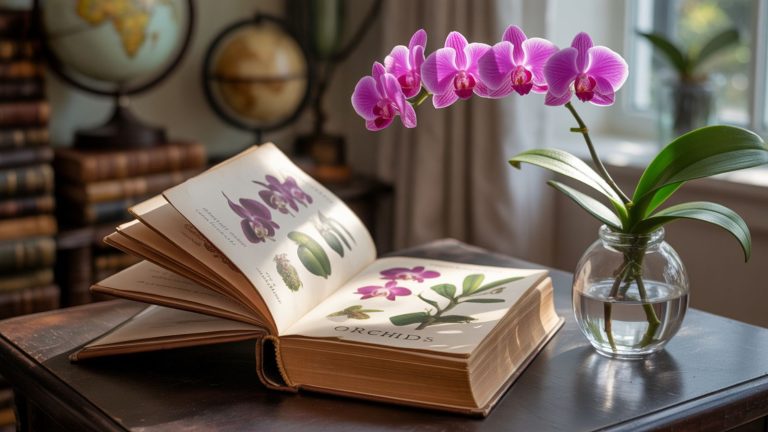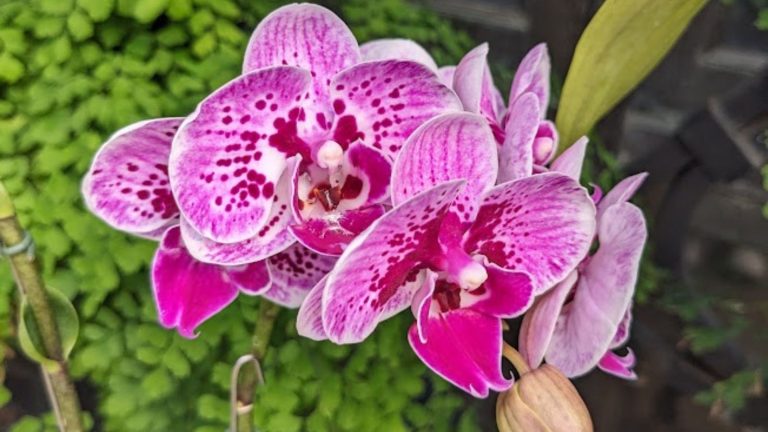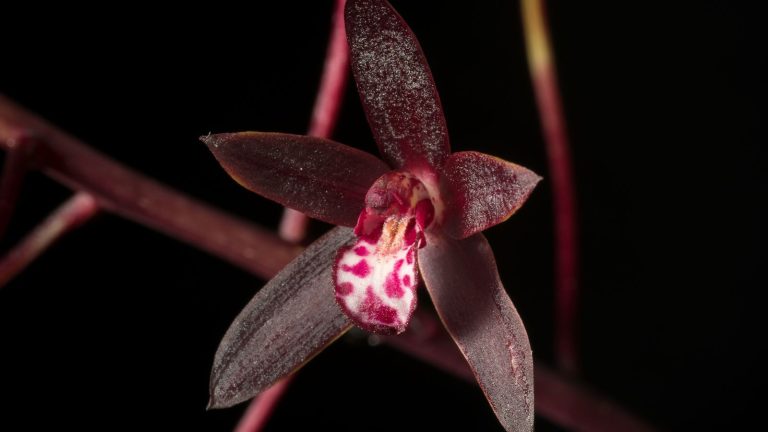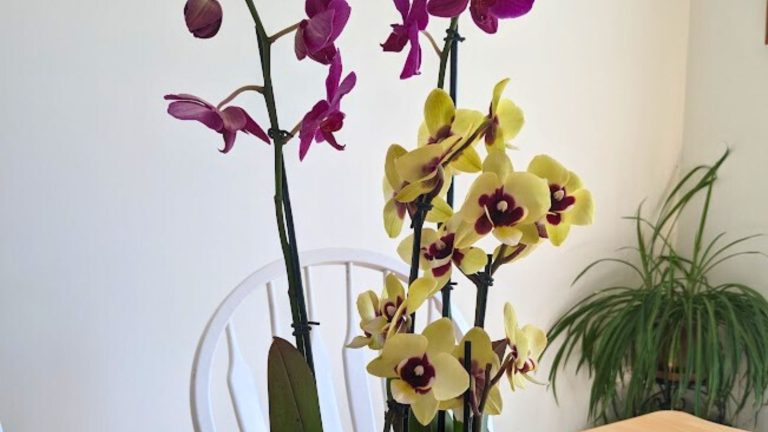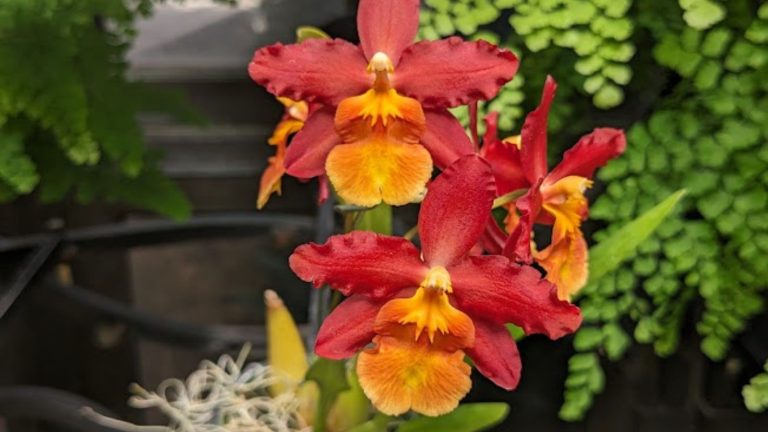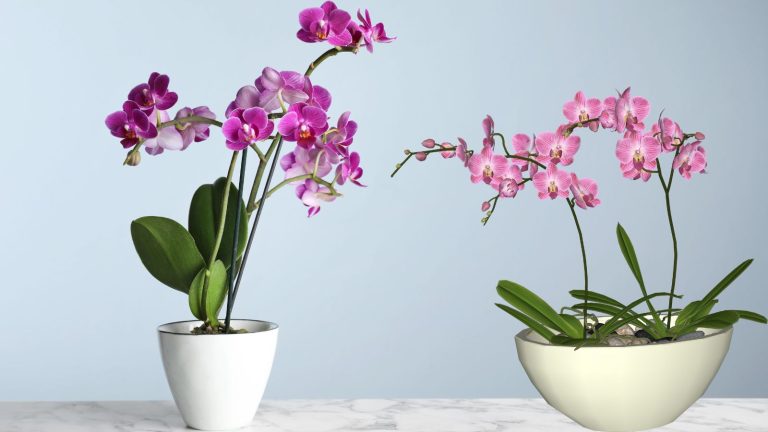Types of Orchids
Orchids are a very large and diverse family of plants. Orchids or Orchidaceae are in the family of monocot flowering plants in the superorder Liliiforae.
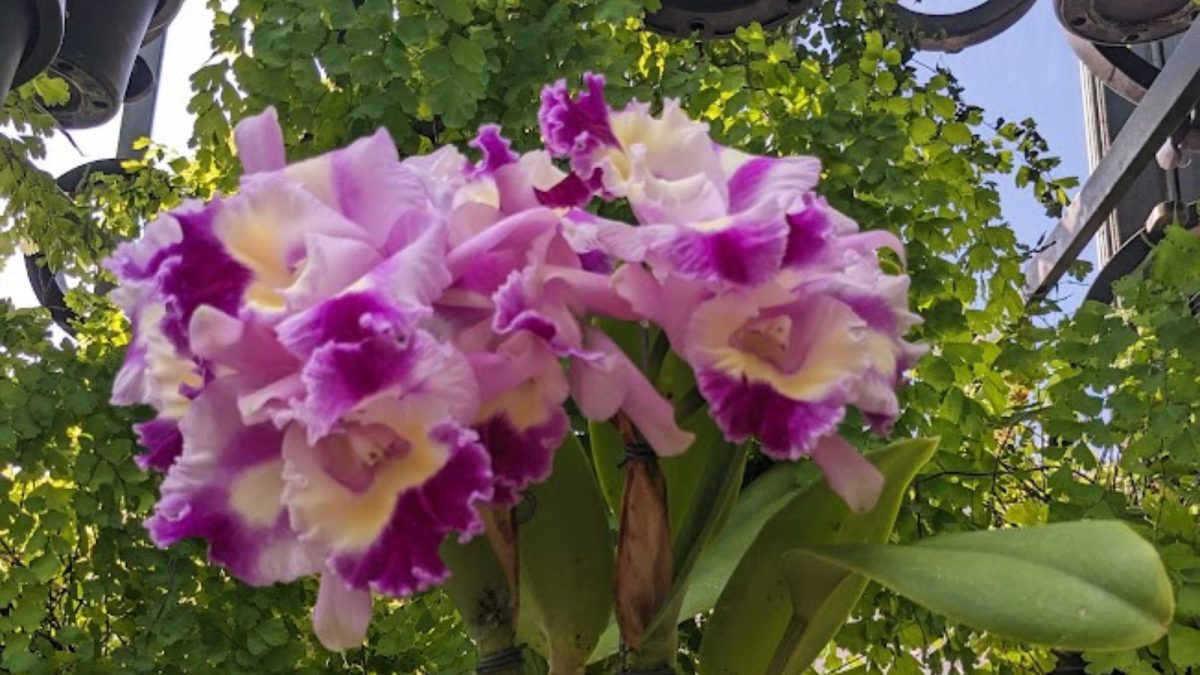
Many people are surprised to find that orchids grow on all the continents except Antarctica. They can be found from the Arctic to the Equator and south from there.
The family of Orchids contains more species than any other family of plants; some estimates are now close to 35,000 species. Yet, interestingly enough, there are essentially two types of orchids or types of growth patterns, monopodial and sympodial. Most orchids fall into one or the other category, and none of them appear to be a mix of the two.
While orchids are readily hybridized between many different genera of orchids, there are no crosses that “cross” this line of this type of orchid.
Are you a new orchid parent? Learn more about orchids.
What? Let me clarify. Essentially, there are two different types of orchids, and they are called monopodial and sympodial. What again? And why does it matter? Well, knowing whether the orchid you have is monopodial or sympodial is important because this information will help you know how to grow it properly, re-bloom it successfully, and also gives you clues as to how to propagate the plant.
Types of Orchids
Monopodial
A plant with a single stem that grows continually in one direction from the terminal shoot, year after year, adding a couple of leaves each season; it has neither rhizome nor pseudobulbs.
Monopodial orchids grow mainly upward. Essentially, these are orchids that have a single stem and the stems grow indefinitely. With this type of orchid, the leaves always grow from the ends of its tip, and it flowers from buds at the juncture of the recently matured leaves and the stem.
Monopodial is Latin for “single foot”. Examples of this type of growth habit are Phalaenopsis, Vanda, and the Japanese wind orchid Neofinetia falcata. Below is a picture of a lovely “Blue” Vanda. Vandas are classical examples of monopodial orchids.
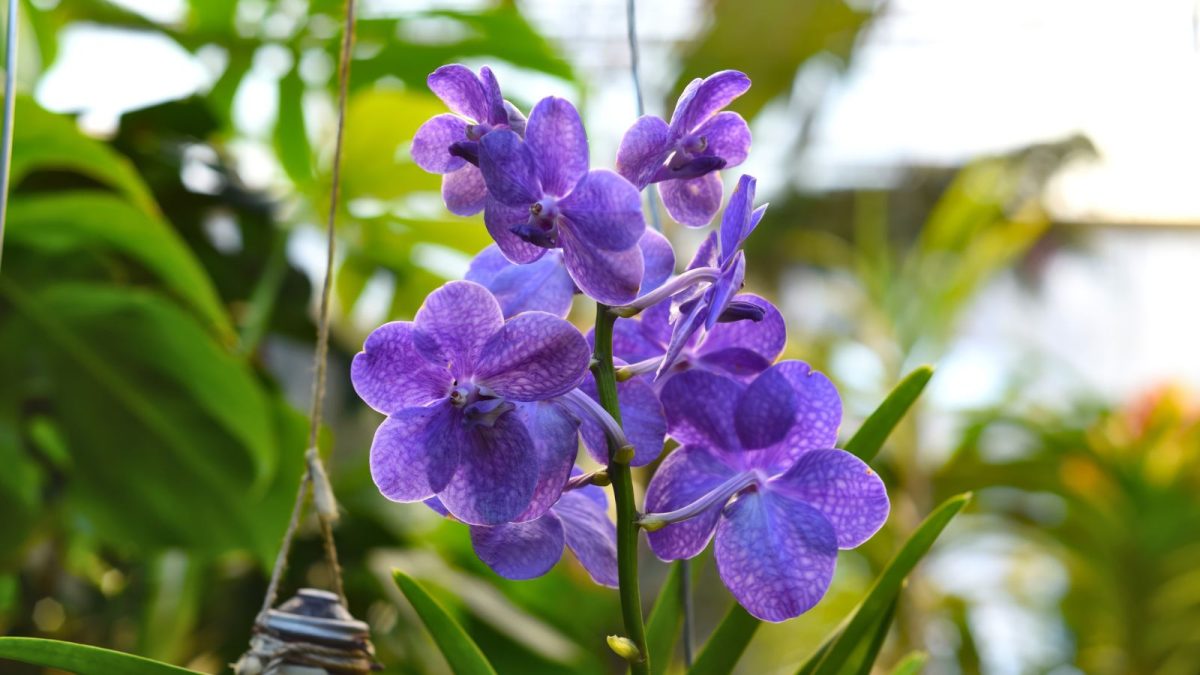
Sympodial
A plant that sends out a new shoot from the rhizome of the previous growth that is a complete plant in itself; several lateral branches emerge from just behind the apex of the main stem, which ceases to grow; the bases of the branches are frequently developed as pseudobulbs; when the branches reach a certain length, they stop growing; what looks like a simple stem is made up of the bases of several stems that arise successively as branches, one from another.
A sympodial orchid grows out along the surface of the growing medium and the stem can often be horizontal. This stem is essentially a rhizome and the new growths come from buds along the stem and can send out their own roots. Flowers of this group can originate from the base of the plant or from a recently matured pseudobulb or from between the leaves at the top. Sympodial is Latin for “many footed”. An example of this kind of orchid would be Cattleya or an Oncidium.
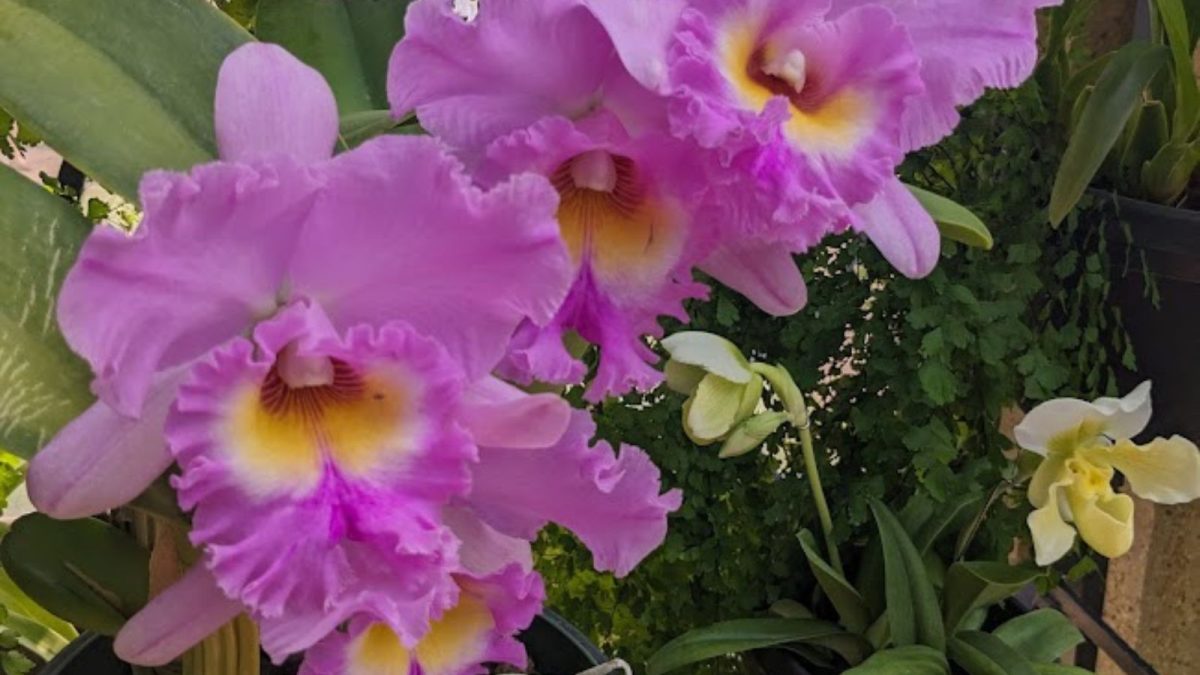
More Types of Orchids
Within these two groups there are additional classifications depending on their manner of growth whether they are terrestrial, epiphytic , climbing or lithophytic.
Terrestrial Orchids as their name would suggest grow and flower on the ground. Among the terrestrial orchids are Spathoglottis, Cymbidiums, the slipper orchids and the Chinese ground orchids. However many do not grow in the same soil that we might think of as potting soil. They grow more in the humus and leaf litter that would comprise the “soil” of the forest floor.
Epiphyte: from Greek “epi”, meaning “upon” and phyton, “a plant”: A plant that grows above the ground on another plant, such as a tree, but is not parasitic on it; derives moisture and nourishment for the air and rain; also call an air plant. Epiphytic orchids are found naturally in the canopy of trees. These are the main group of tropical orchids. They use the trees for support and exposure to sunlight, but do not take any nourishment for the trees on which they grow. They are not parasitic. They produce aerial roots which do not thrive in soil. Many Vandas are epiphytic.
Climbing orchids are monopodial. They often originate on the ground and move up higher in the tree, climbing as they grow. They often have extensive aerial roost. A Vanda would be this kind of plant as well.
Lithophyte: Again from Greek “litho” meaning stone and phyte “a plant”. So a plant that grows on the surface of rocks or on stony ground. These types of orchids are rarer and not as commonly cultivated.
The lithophitic orchids are manly from the more tropical areas of the world. They grow exposed on rocks and high outcroppings. Their strong roots absorb moisture and nutrients from the air and any additional nutrients from the detritus and organic debris that collect in the crevices of the rocks. The leaves of some of these orchids are often quite fleshy and they have succulent pseudobulbs to help hold moisture to help the plant through any prolonged dry spells.
Examples of this kind of orchid include several Pathiopediliums and Bulbophyllum membranaceum that might occur.
Common Orchid Types List:
- Phalaenopsis (Moth Orchid) – Easy to grow, long-lasting blooms, perfect for beginners.
- Cattleya – Known for large, fragrant, showy flowers, often used in corsages.
- Dendrobium – Tall canes with multiple flowers; many varieties and colors.
- Oncidium (Dancing Lady Orchid) – Small, fluttery flowers; often yellow and brown.
- Vanda – Stunning blooms in vibrant colors; needs lots of light and humidity.
- Paphiopedilum (Lady’s Slipper Orchid) – Unique pouch-shaped blooms; prefers low light.
- Cymbidium – Cold-tolerant, with many flowers per spike; great for outdoor pots in mild climates.
- Miltoniopsis (Pansy Orchid) – Large, flat flowers that resemble pansies; cool-growing.
- Ludisia (Jewel Orchid) – Grown more for its velvety, patterned foliage than flowers.
- Zygopetalum – Fragrant blooms with bold patterns; cool to intermediate temperatures.
So this covers the basic types of orchids.
